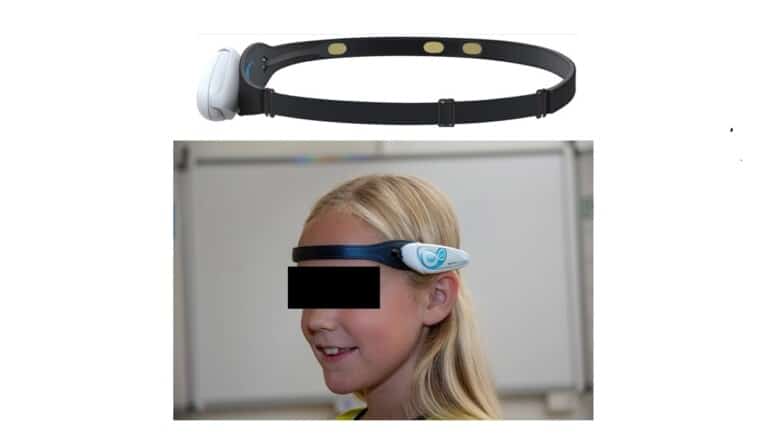Not all neurotechnologies require an implant in the brain. Several neurotechnological applications use neural signals that are acquired non-invasively, such as the scalp electroencephalogram (EEG) through electrodes on the scalp. The EEG method has been used in clinics and laboratories for nearly 100 years and could now be used at home.
The picture above shows a device that monitors epileptic seizures using scalp EEG (Japaridze, et al., 2022). EEG electrodes are attached to the inside of the headband and contact the scalp without conductive gel (so-called “dry” electrodes). The EEG signal is wirelessly transmitted to a smartphone-based processing module where a seizure detection algorithm monitors the signal in real time. The system has passed the development phases of the EU clinical trial procedure and is currently in Phase III, in which a large number of users are participating to validate the safety and efficacy of the system-based intervention in several European countries.
During an absence seizure, patients lose consciousness, usually for less than 30 seconds, as if they have been “paused”. Although the period of unconsciousness is relatively short, the seizure can occur at any time. In some cases, this can happen more than 10 times a day. EEG monitoring is essential to control the seizure. The home system is designed to provide quality data without having to go to the clinic. The system could also reduce psychological and social barriers for patients. For example, a school-age patient in Belgium was frustrated because his teachers and classmates sometimes did not understand that he missed instructions because of his seizures. The seizures could make him look like he is not paying attention. His frustration eventually led to the creation of the wearable seizure detection system, which has the ability to signal to teachers and others in real time (Read the full story here). For him and many others, the wearable system is also a tool to regain control of their lives.
Reference: Japaridze, G., Loeckx, D., Buckinx, T., Armand Larsen, S., Proost, R., Jansen, K., … & Beniczky, S. (2023). Automated detection of absence seizures using a wearable electroencephalographic device: a phase 3 validation study and feasibility of automated behavioral testing. Epilepsia, 64, S40-S46.


